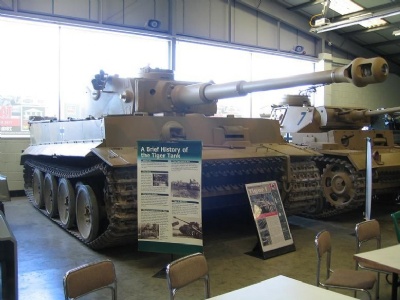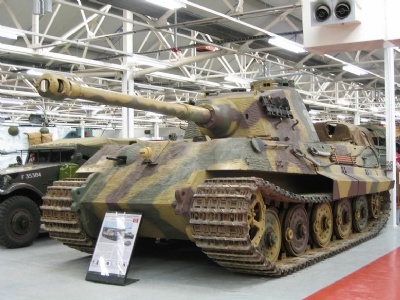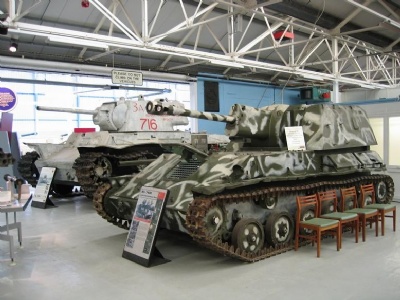Bovington
In the south of England there is a small town called Bovington and there is one of the world’s largest tank museum. Second World War developed the technical warfare that had begun in First World War. But it was only during Second World War that both tanks and aircraft gained the notoriety they lacked in First World War. Aircraft such as the English Spitfire, Japanese Zero, German Messerschmitt, American Mustang and the flying fortress, B-17, are all well-known. On ground we have American Sherman tank, Soviet T-34, British Mathilda and German Panther, but no one has gained such a reputation and notoriety as the German tank Tiger I (Panzerkampfwagen VI Ausfuhrung H).
Tiger I had an armor that enemy tanks had difficulty penetrating from distance. The Tiger’s 88 mm cannon, on the other hand, could easily knock out enemy armor at long distance. But at the same time, its thick armor and powerful cannon was its disadvantage as it made the Tiger slow in speed and extremely fuel thirsty. Tiger I was first manufactured in 1942 and was first used at the Leningrad front in autumn 1942. Only 1,355 were produced between 1942 and 1945. This can be compared to the 57,000 Soviet T-34 produced up to the end of the war. Despite its numerical disadvantage, the Tiger was feared on all fronts. A battle between a single Tiger tank and several T-34 resembled a battle between an angry bull (Tiger) and a pack of wild dogs (T-34). The Tiger knocked out several T-34s, but the numerical superiority of the latter often led to the Tiger being forced to flee or being defeated by the ferocious T-34.
Current status: Museum (2008).
Address: Linsay Rd, Bovington, Wareham BH20 6JG.
Get there: Train to Wool then bus to the museum.
Follow up in books: Spielberger, Walter J: Tigers I and II and Their Variants (2007).



In several places in Europe, there are both T-34 and Sherman’s erected at cemeteries, museums or other places as a form of memorial monument. In the case of Tiger I, there are only seven left that can be visited, albeit in varying condition and sometimes a mix of several Tigers. In addition to Bovington, there are two in Moscow, two in France, one in Australia and the United States. Perhaps some more miscellany are to be found in private collections. Although I am not interested in the history of armour, there is something special about the Tiger that feels fascinating, exciting and mythical. Something that makes me unable to deny that there is a military romantic inside me that is brought to life every time I approach a Tiger.
Bovington’s Tiger was captured in Tunisia in April 1943 and had been crippled in battle with an English churchill tank. It was later taken to England and stored for a long time. But in 2003 it was repaired for about 250 000 Euro to runable condition. The Tiger tank is just one of several tanks at the museum but probably one of its most precious.